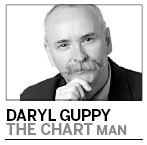Confusion hits the euro, hurting China
Updated: 2012-05-28 11:34
By Daryl Guppy (China Daily)
|
|||||||||||
The Spanish bullfight looks like ending in a victory for the matador and the death of the bull. Greece is ditching its affair with the euro and Europe cannot decide between austerity or growth on the back of a stimulus steroid injection. There are many casualties in this European confusion.
The first casualty is the United States. It is affected by a return of market volatility not seen since early 2008. It is not just the size of the intraday trading ranges that is of concern. It is also the consistent direction of the index moves. This fall in the Dow is rapidly approaching the limits of a 10 percent technical correction and may become a full-blown trend reversal.
|
|
A third casualty is the flow within the currency markets. These are confused. The US Dollar Index has rallied quickly above $0.815 and has a clear run toward $0.89. There is minor resistance near $0.84. A strong US dollar brings a new range of tensions into trading relationships.
Gold, which is normally a beneficiary of this type of market confusion and instability, has continued to drop below the long-term upward trend line. Downside support is near $1,440.
This is a contagion quickly infecting all economies. The speed and severity of the effect underlines the comparative weakness of many economies as they still struggle to climb out of the wreckage of the global financial crisis. The crisis is not over and it is too soon to say if the current Greek-inspired tragedy is the final act or just a prelude to a much more dramatic finale. That result will be determined by the resilience of economies such as China and the United States.
These are confusing and unexpectedly contradictory reactions. This signals two things. The first is that investors must use extreme caution in this environment. Traders must be more nimble and quick footed than in other market conditions. The second is that this environment makes analysis difficult so conclusions must always be confirmed with other verifying behavior. The balance of probabilities is not clearly tipped one way or the other.
The euro-dollar exchange rate gives an indication of investors' views of the health of the European economy. The euro-dollar weekly chart is dominated by a strong and well-established downward trend that has been in place starting in May 2011 from the high at 1.49. This downward trend line was tested in September 2011 with a high near 1.45 followed by a retreat. The recent rally failed to touch the trend line before starting on a new downward trend. This behavior gave early warning of more weakness in the euro.
The first key support level was near 1.29 and the market has dropped below this level. The fall below 1.29 has the next support level near 1.24. This defined the limits of euro weakness in 2008 and 2009 so there is a high probability it will again provide good support. The downward trend pressure is well established so there is an increasing probability the euro may fall below 1.24. In 2010 the Euro dipped to a low of 1.19, which was also near to the 2005 lows. Unlike now, in 2005 Europe was not convulsed with monetary and economic indecision.
Falls below 1.24 are not unprecedented. In 2001 the euro was trading at 0.88. The acceleration and spread of the Greek contagion has the potential to drag the euro below 1.19. It is no longer an unthinkable outcome.
The author is a well-known international financial technical analysis expert.

Related Stories
China 'should prepare' on euro 2012-05-25 09:24
EU urges Greece to stay in euro 2012-05-24 10:36
Growth slowdown may continue in May: HSBC 2012-05-25 08:55
How can China prevent a slowdown from turning into a hard landing? 2012-05-25 08:18
Govt urges stability; analysts fear slowdown 2012-05-24 06:57
Mainland equities decline on concerns of export slowdown 2012-05-10 13:27
Today's Top News
President Xi confident in recovery from quake
H7N9 update: 104 cases, 21 deaths
Telecom workers restore links
Coal mine blast kills 18 in Jilin
Intl scholarship puts China on the map
More bird flu patients discharged
Gold loses sheen, but still a safe bet
US 'turns blind eye to human rights'
Hot Topics
Lunar probe , China growth forecasts, Emission rules get tougher, China seen through 'colored lens', International board,
Editor's Picks

|

|

|

|

|

|






